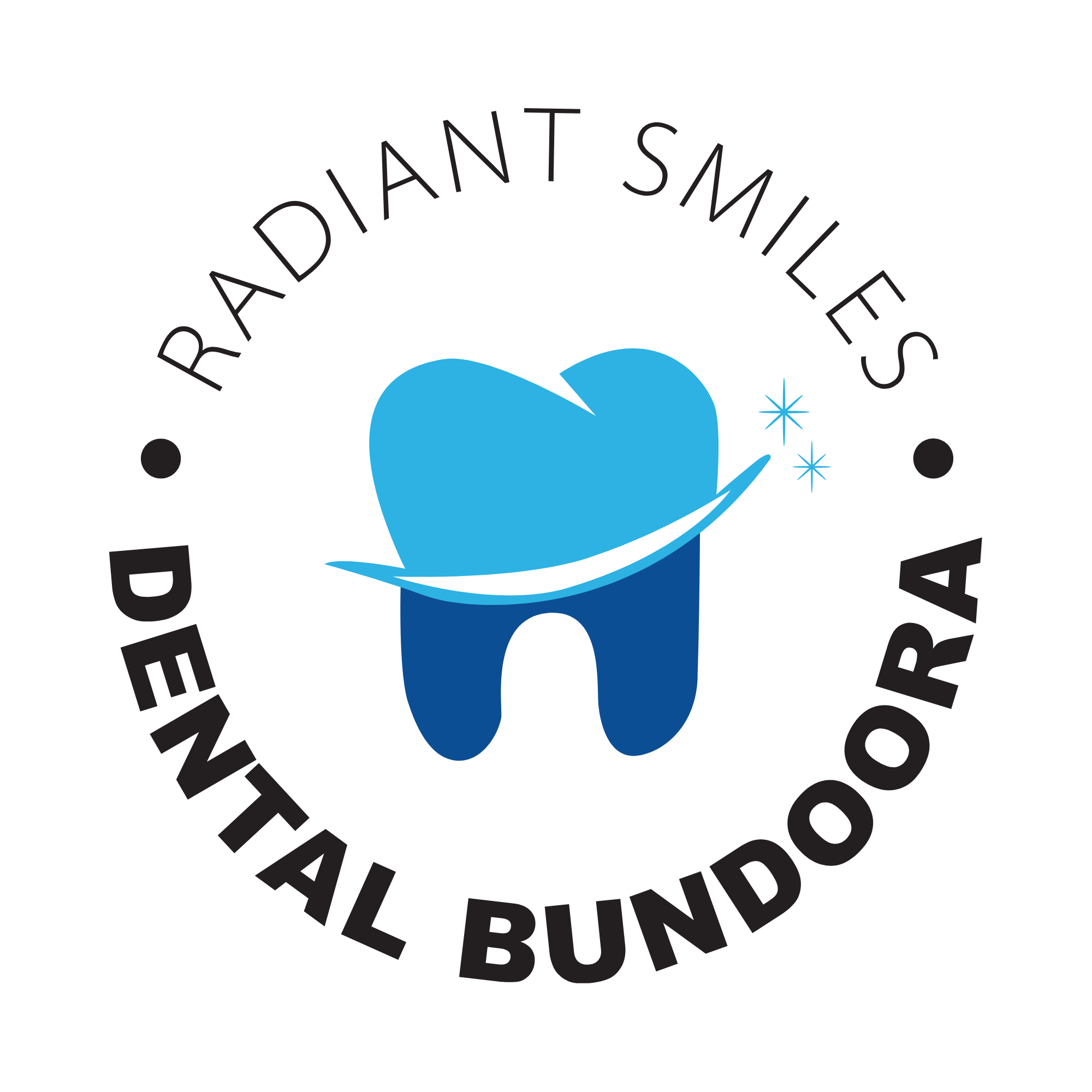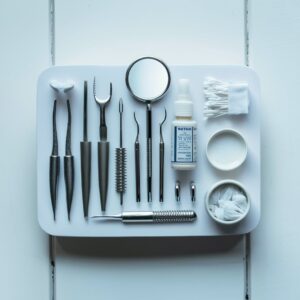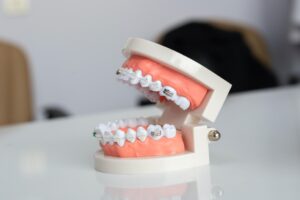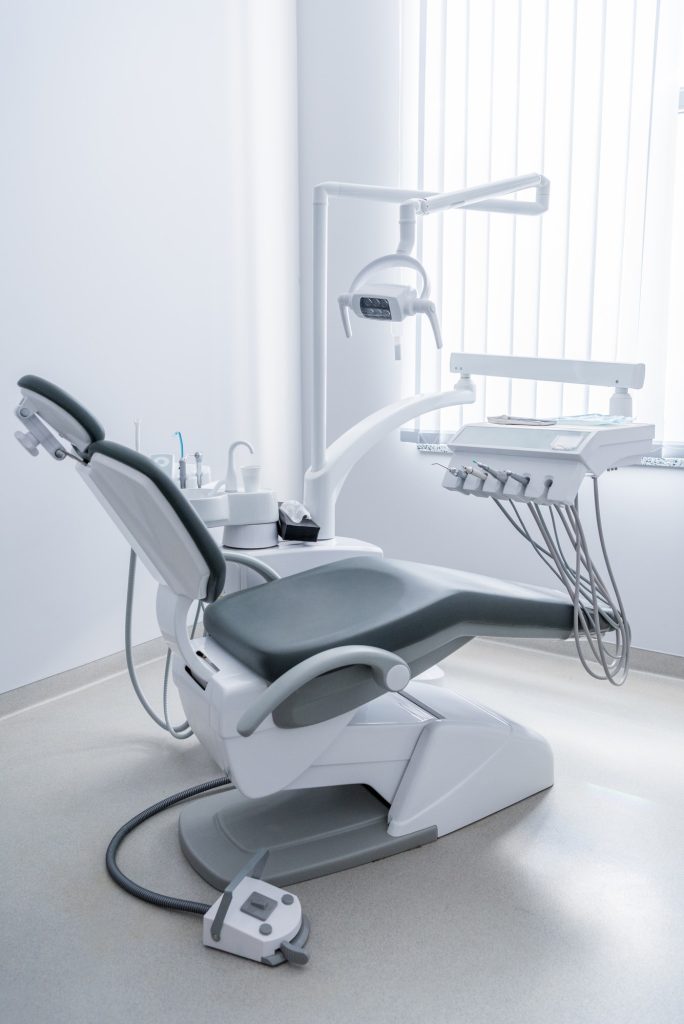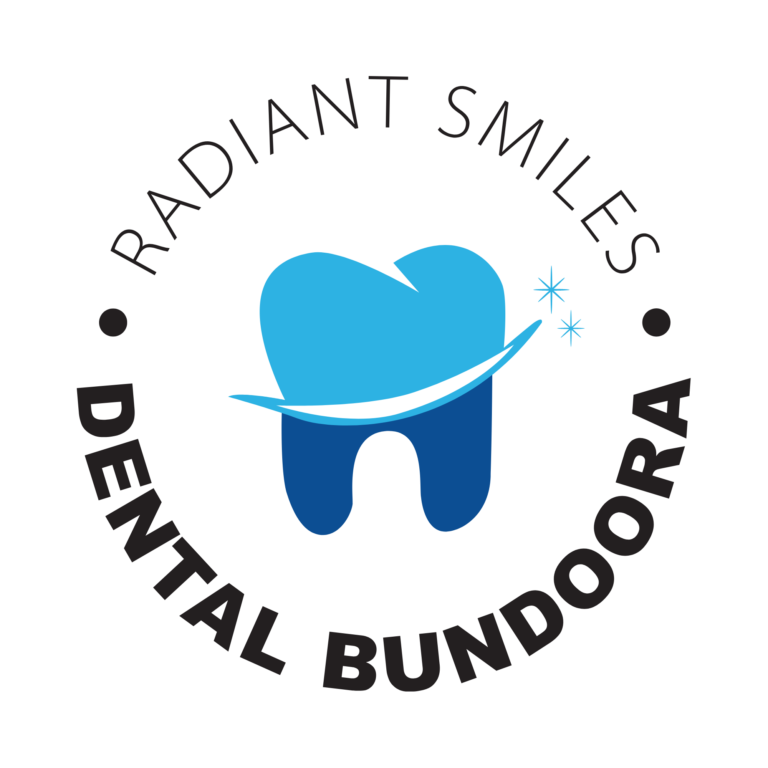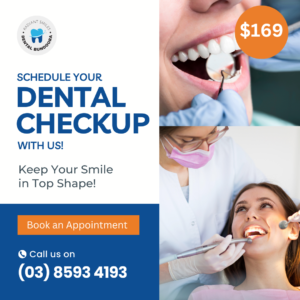A broken tooth can be a dental emergency, especially if it is accompanied by bleeding and severe pain. A survey showed that 82% of people over 15 in Australia had visited a private dental practice at least once in a two-year span. This includes patients who experienced dental emergencies or needed to visit the dentist for scheduled treatments.
Although we will all be part of that statistic at some time or another, it is best to be prepared. In this article, we will explain the common causes of broken teeth and help you familiarise yourself with the treatment methods your dentist may prescribe for it.
Now let’s get started on learning about what causes a broken tooth and how to deal with the broken tooth pain.
Causes of a chipped or broken tooth
Teeth can become chipped, cracked, or broken for many reasons, including:
- Ageing teeth are more susceptible to cracks and chips.

- Teeth grinding damages both children’s and adults’ teeth, often causing breakage.
- Large fillings also put extra strain on the tooth, weakening it and making it more likely to break.
- Sudden temperature changes can occur when you eat hot food and then immediately drink cold water. This causes the tooth to expand and contract rapidly, leading to cracking or chipping.
- Accidents such as car crashes, sports injuries, or falls can also lead to cracked or chipped teeth if there is a direct blow to the mouth area.
- Chewing on hard nuts, candy, or ice can also put enough pressure on the teeth, causing tooth cracks.
How do you know if you have a broken tooth?
Tooth damage, cracks, and breakage may not always be visible right away. In fact, it might not even appear on X-rays. As a result of this delayed visibility, you may have difficulty identifying the broken teeth and pinpointing the root cause of the breaks. When consulting with your dentist about potential tooth damage, here are a few symptoms of broken teeth to discuss:
Temperature sensitivity
Cold and hot foods can be painful for people with broken or cracked teeth, and even sweetness might cause some discomfort. This is because tooth sensitivity is a sharp nerve reaction that occurs when your damaged tooth comes into contact with extreme temperatures. The level of pain you feel depends on how deep the crack is.
 Infection
Infection
Ignoring a broken tooth can eventually lead to an infection of the pulp.
If this happens, you will need to see an emergency dentist for treatment, as the infection could spread to your bones and gums.
Bad breath or increased pain are signs that your broken tooth problem has gotten worse and may have developed into an infection.
Pain when chewing
If you’re experiencing pain while chewing, especially if it’s sudden, a cracked or broken tooth is likely the culprit. The pain can be severe or mild, but it will mainly be felt when you bite down and release. It may be hard to identify which tooth is causing the discomfort; your dentist will be able to help with that.
Gum Swelling
Other than the aforementioned symptoms, another common sign of cracked or broken teeth is gum swelling. The swelling can occur at or around the damaged tooth and will be prominent due to its redness. This is an indication that you have a damaged pulp.
How to treat a broken tooth?
The type of tooth treatment you require depends on the size and location of the broken tooth. No matter what has caused your broken tooth, it’s important to seek dental help right away instead of waiting for the pain, swelling, and bleeding to subside on their own.
At your appointment, your dentist will likely suggest one or a combination of these treatments:
Teeth Bonding
Teeth bonding provides a seamless way to fix any cracks or damage on your teeth. By filling the crack with plastic resin, your teeth will feel new and healthy in no time.
Root canal therapy
When the crack reaches the pulp and the tooth is almost broken, it can become very painful. In this case, your dentist may recommend a root canal. Root canals relieve pain and save your tooth from extraction.
Tooth Extraction
When the roots and nerves beneath a tooth are severely damaged, that tooth will need to be extracted.
Crown
A dental crown is a cap that encases the entire tooth. This provides support to prevent further damage and makes the tooth more durable overall. The dentist will file down the top and sides of your teeth before putting on the crown so it can fit securely, then cementing it into place.
Veneers
A dental veneer is a cosmetic dental procedure used to improve the appearance of teeth. They are thin shells made of tooth-coloured porcelain or resin composite material that covers the front surface of teeth, much like false nails cover fingernails. Veneers can be used to restore broken or chipped teeth back to their original shape and size.
 Your dentist will remove 0.3 to 1.2 millimetres of tooth enamel and then make an impression of the tooth which will be sent to a dental laboratory. The veneer usually takes one or two weeks before it’s ready, and you’ll need to go back for placement at that time. Roughing up the surface of the tooth with a liquid etch is a primary step your dentist will take to place the veneer. A special cement is then applied to the veneer and placed on top of the prepared tooth. Once everything is in position, your dentist will use a curing light to harden the cement quickly.
Your dentist will remove 0.3 to 1.2 millimetres of tooth enamel and then make an impression of the tooth which will be sent to a dental laboratory. The veneer usually takes one or two weeks before it’s ready, and you’ll need to go back for placement at that time. Roughing up the surface of the tooth with a liquid etch is a primary step your dentist will take to place the veneer. A special cement is then applied to the veneer and placed on top of the prepared tooth. Once everything is in position, your dentist will use a curing light to harden the cement quickly.
How to relieve broken tooth pain?
While these remedies may not work perfectly -or how you might want them to- in every situation, they may provide enough relief to help make the time until your appointment more manageable:
- Over-the-counter medications like Motrin or Advil (ibuprofen) and Tylenol (acetaminophen) can help relieve pain. However, be sure to check that these are safe to use with other medications you may be taking first. Aspirin is usually not recommended as it can slow blood clotting and cause problems if a root canal becomes necessary.
- Gently floss in between the teeth that are cracked or broken. It’s important to remove food particles and plaque because it can significantly reduce pain. Be careful not to poke around the affected tooth too deeply.
- Clove oil, which contains eugenol, can be found in most health food stores and is a natural anesthetic that has been used in dentistry for over 100 years. Use it by soaking a small piece of cotton in the oil and then blotting the cotton on a tissue to remove excess. Hold the cotton against the painful tooth for a few seconds, making sure not to swallow any of the oil.
- At your local pharmacy, you can purchase an over-the-counter dental anesthetic containing benzocaine and lidocaine. Alternatively, you could use a temporary filling material (Dentemp) to plug the affected tooth.
- To reduce pain, keep your head elevated when you sleep. This will also help with the inflammation of the nerve that is often associated with a cracked tooth. Having your head in an elevated position may take some pressure off the area around the toothache.
- Rinse your mouth with a mixture of warm water and salt two to three times daily. The benefits of saltwater include removing bacteria from the infected area and working as an antiseptic.

Is a broken tooth always a dental emergency?
Whether or not you need to see a dentist right away for your broken tooth depends on the severity of the break. For example, small chips can usually wait until your next regular appointment. But if a large portion of the tooth is broken, get professional help right away. In many cases, dentists can accommodate emergencies into their schedule with little notice.
Bring your smile back to life by getting your broken tooth fixed as soon as possible!
Radiant Smiles Dental Group will take care of your pearly whites. Our emergency dentists have the experience and training to not only detect issues with your teeth but also understand the root cause of your dental emergency. We’ll give you relief and get to the bottom of what’s causing that broken tooth–all in one visit! Call us now on (03) 9000 0537!
Note: Any surgical or invasive procedure carries risks. Before proceeding, you should seek a second opinion from an appropriately qualified health practitioner.
References
Repairing a chipped or broken tooth
https://www.webmd.com/oral-health/guide/repairing-a-chipped-or-broken-tooth
What to do if you chip or break a tooth?
https://www.healthline.com/health/how-to-fix-a-chipped-tooth#caring-for-a-chipped-tooth-or-broken-tooth
[/et_pb_text][/et_pb_column][/et_pb_row][/et_pb_section]
 Now
Now